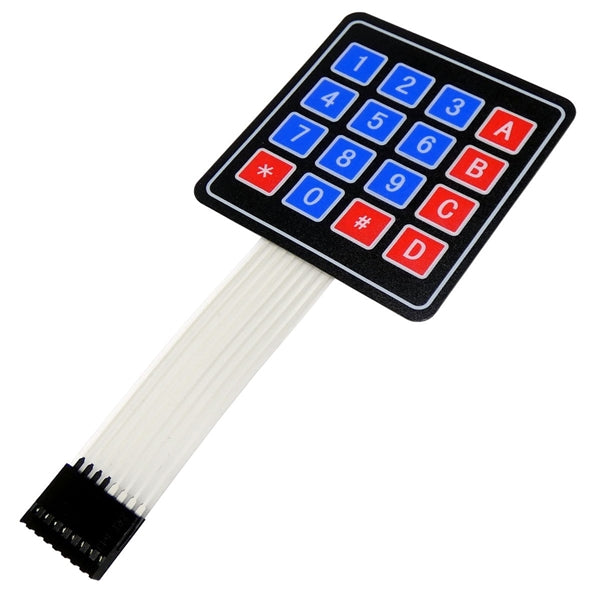Membrane Switches: A Cost-Effective Solution for Product Interfaces
Comprehending the Value of Membrane Switches in Individual Interfaces
Membrane buttons are important elements in the style of efficient individual interfaces, helping with not only performance yet also enhancing visual allure and individual interaction. As we explore the numerous advantages and future patterns connected with Membrane technology, it becomes clear that these switches are a lot more than simply elements; they represent a convergence of advancement and usefulness.
What Are Membrane Switches?

The spacer layer, which has glue buildings, permits the splitting up of the circuit layer from the overlay, guaranteeing that the switch continues to be in a non-activated state till pressed. When pressure is related to the overlay, it compresses the spacer layer, bridging the space and completing the circuit in the underlying layer. This layout not just reduces the physical room needed for conventional mechanical buttons however also boosts the toughness of the device, as Membrane switches are usually immune to dust, wetness, and other ecological variables.
Commonly discovered in applications varying from customer electronics to clinical devices, Membrane buttons are indispensable to modern-day innovation, offering a effective and user-friendly interface that lines up with contemporary style needs.
Benefits of Membrane Buttons
While many switch modern technologies exist, Membrane Switches deal distinctive advantages that make them specifically desirable in different applications. Among the primary benefits of Membrane buttons is their portable design, which enables for space-saving executions in devices where property is restricted. Their thin account not just boosts aesthetic charm however additionally facilitates lightweight building and construction.
One more substantial benefit is their resistance to ecological factors. Membrane switches are normally secured versus moisture, dust, and contaminants, making them optimal for usage popular settings, such as clinical tools and commercial tools. This durability extends the lifespan of the switch, decreasing maintenance costs and enhancing reliability.
Furthermore, Membrane switches can be customized to meet specific layout needs, including one-of-a-kind graphics and shades that improve individual interaction. Their tactile feedback alternatives can additionally be customized to offer a rewarding individual experience. Additionally, Membrane buttons are economical, especially in high-volume applications, as they can be produced successfully.
Applications in Numerous Industries

In the consumer electronics industry, Membrane switches are prevalent in tools such as microwaves, cleaning additional resources equipments, and remotes. Their responsive comments and aesthetic options enhance user experience while providing a streamlined, modern-day appearance. Furthermore, automobile manufacturers utilize Membrane switches in dashboard controls and infomercial systems, where room is limited, and user involvement is essential.
In addition, the commercial industry leverages Membrane buttons in control panels for machinery and tools, permitting user-friendly operation in usually extreme atmospheres. Their resistance to chemicals and moisture makes certain durability and reliability in these applications. On the whole, the versatility of Membrane Switches adds substantially to their widespread usage, making them important in various technical domains.
Layout Considerations for Membrane Switches

When designing Membrane buttons, several essential factors to consider have to be considered to make sure optimum performance and individual experience. Firstly, the option of products is critical; choosing sturdy, top quality substrates can boost the button's longevity and resistance to environmental aspects such as dampness and temperature fluctuations.
Secondly, the design of the graphic overlay should prioritize clarity and ease of use. Icons and text must be clear, and the design ought to help with user-friendly interaction (membrane switches). Furthermore, tactile feedback is important; incorporating a tactile dome or other devices can boost the customer experience by supplying physical verification of activation
One more essential element is the switch's electric efficiency. Designers should ensure that the conductive traces are properly designed to decrease resistance and stay clear of signal interference. This involves advice assessing the called for actuation force and guaranteeing compatibility with the digital parts they will interface with.

Future Trends in Membrane Innovation
As modern technology remains to advancement, Membrane buttons are positioned to evolve considerably, driven by advancements in materials and making techniques. One emerging pattern is the consolidation of advanced products, such as flexible substrates and conductive inks, which enhance toughness and lower the total weight of Membrane switches. These products not only enhance the responsive action however also permit for the design of buttons that can withstand harsher environmental problems.
Furthermore, the assimilation of touch-sensitive innovations is changing traditional Membrane Switches right into more interactive customer interfaces. Capacitive touch sensing units embedded within Membrane button panels can supply an extra receptive and user-friendly user experience, straightening with the expanding need for sleek, modern layouts in customer electronics.
Additionally, developments in printing techniques, such as electronic and 3D printing, allow rapid prototyping and customization of Membrane switches. This flexibility permits makers to respond more promptly to market needs and consumer preferences.
Lastly, sustainability is coming to be a considerable focus, with makers checking out eco-friendly products and processes. As these fads unfold, the future of Membrane innovation assures improved functionality, visual charm, and environmental obligation, solidifying their function in advanced customer interfaces across different industries.
Final Thought
In verdict, Membrane Switches stand for an essential part in the layout of user interfaces, combining functionality with aesthetic flexibility. As developments in innovation continue, the evolution of Membrane switches is anticipated to more improve customer interfaces, driving technology and boosting use in a significantly intricate technical landscape.
Membrane switches are essential components in the design of reliable customer interfaces, assisting in not only performance but also boosting visual charm and user communication.Membrane Switches offer as an essential element in various user interfaces, promoting a smooth interaction in between customers and electronic devices.While countless button technologies exist, Membrane Switches deal unique advantages that make them particularly preferable in various applications.In addition, Membrane switches can be tailored to satisfy particular layout requirements, integrating unique graphics their website and colors that improve customer communication.In final thought, Membrane Switches stand for a crucial component in the layout of user interfaces, incorporating performance with visual flexibility.